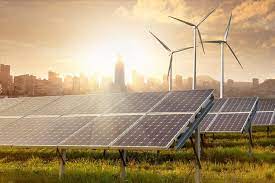
There’s something oddly empowering about seeing your energy usage laid bare on a screen. Numbers that once arrived quietly on a quarterly bill are now lighting up dashboards—live, visual, and surprisingly telling.
And here’s the clincher: those numbers aren’t just about usage. They shape decisions. Whether you’re managing a single shop or a chain of retail stores, energy dashboards are helping Aussie businesses cut costs, tweak operations, and reduce retail store energy bills without guesswork.
What exactly is an energy dashboard?
At its core, an energy dashboard is a digital display of how and when your business uses energy. It pulls data from smart meters, submeters, and sometimes IoT devices, and turns that into graphs, alerts, and usage summaries. In simple terms—it shows what’s guzzling your power, and when.
Unlike static bills, dashboards give you:
- Live or near-real-time data
- Hourly, daily, and seasonal trends
- Comparisons across locations or systems
- Alerts when usage spikes unexpectedly
It’s the kind of visual feedback that makes inefficiencies obvious, even to the untrained eye. And let’s be honest—most of us aren’t electrical engineers. We just want to know what’s costing us and how to fix it.
How do energy dashboards improve business decisions?
Let’s break this down with real-life scenarios. Picture a franchise café in Sydney and its sister store in Newcastle. Both serve the same menu, open the same hours, and run similar equipment. But the Sydney store is using 15% more energy every month.
Without a dashboard, that might slip through the cracks. But with one? It jumps off the screen. Maybe it’s the old fridge that needs replacing. Maybe staff are starting prep too early. Or maybe the aircon’s running on full blast while the doors are wide open.
Here’s where decision-making gets sharper:
1. Operational adjustments made easy
See a spike every morning at 6am? You can change opening routines. Notice a pattern on hot days? Adjust HVAC settings. These are micro-decisions that add up to thousands of dollars each year.
2. Cross-location comparisons
Dashboards let you benchmark stores. Who’s performing better per square metre? Who’s consistently overusing power? Instead of anecdotal insights, you’re now leading with data. That’s pure Cialdini Authority principle—people respect numbers.
3. Forecasting and budgeting with precision
Energy costs can fluctuate wildly, especially with time-of-use tariffs. Dashboards help you predict those swings and plan for them—no more budget blowouts from surprise bills.
Are energy dashboards worth the investment for small businesses?
You bet. Especially if your business relies on lighting, HVAC, refrigeration, or operates multiple hours a day. Even modest savings make a difference.
Here’s what a boutique fashion store in Fitzroy told us:
“We never realised the upstairs lighting was on 24/7 until we checked the dashboard. It sounds small, but fixing it saved us over $500 a quarter. That’s real.”
Energy dashboards aren’t a luxury—they’re a lever. And for small retailers who often operate on tight margins, they can make or break your annual spend.
What features should you look for in an energy dashboard?
There’s no one-size-fits-all. But here are key features that actually help businesses (not just impress techies):
- Live or real-time tracking – Know what’s happening now, not just last month.
- Custom alerts – Get a heads-up when usage goes off-track.
- Comparisons and benchmarking – Ideal if you have multiple stores or meters.
- Mobile-friendly access – Because you’re not always at your desk.
- Downloadable reports – Useful for ESG reporting or presenting to landlords.
Some retailers even integrate dashboards with POS or rostering tools. That way, they can link energy spikes to staff patterns or transaction data.
How often should energy dashboards inform decision-making?
You don’t need to watch it like the stock market. But weekly reviews are a good rhythm. Here’s a simple checklist:
- Mondays – Review last week’s usage and compare to previous weeks
- Mid-month – Look for trends; set goals if needed
- End of quarter – Do a full review with your accountant or ops lead
Some businesses build it into team culture. One manager told us they run a “power shoutout” at monthly meetings—celebrating the store with the best energy efficiency. That’s Cialdini’s Social Proof in play. It motivates teams without nagging.
Are there risks or downsides?
Like any tool, dashboards can be ignored—or worse, misunderstood. A common pitfall? Trying to micro-manage everything.
The trick is to use energy dashboards as decision tools, not control panels. You don’t need to obsess over every spike. Look for patterns, not one-offs. And if you’re not sure what the data’s saying, get help from your energy provider or a third-party consultant.
One more tip: don’t forget context. A spike during Christmas retail rush? Fair game. But a spike during lockdowns? That’s a red flag.
FAQ: Making the most of your energy dashboard
Q: Can I set targets in my dashboard?
A: Yes, many dashboards let you set daily or monthly usage goals, and will notify you if you’re on track or over.
Q: Do these tools require special training?
A: Not really. Most platforms are built with plain-language summaries and visual charts that are easy to grasp.
Q: Can I use this data in my ESG reporting?
A: Absolutely. Energy dashboards can provide verified data points for sustainability disclosures and compliance checks.
Final thought: Good data makes good decisions
Energy dashboards don’t just show you numbers—they tell stories. They show you when your business is humming, and when something’s off. And if you lean in and listen, they’ll help you reduce waste, lower costs, and reduce retail store energy bills over the long haul.
Because in business, the smartest decisions are the ones you can back with real data.
